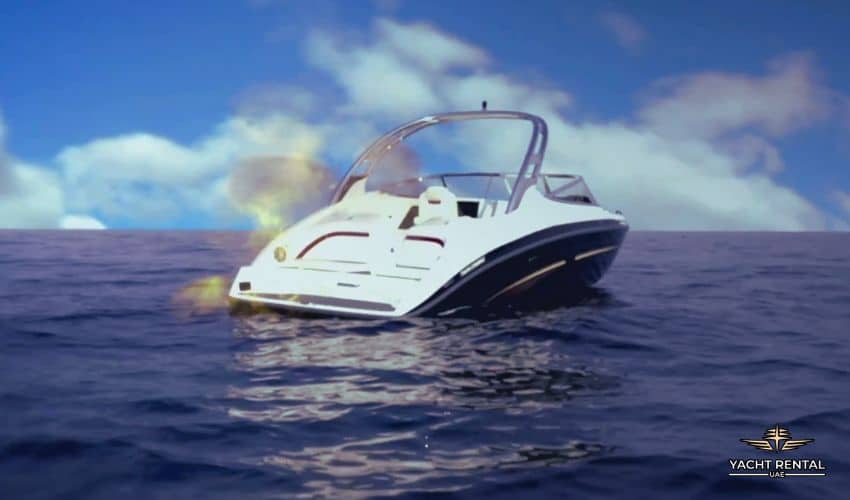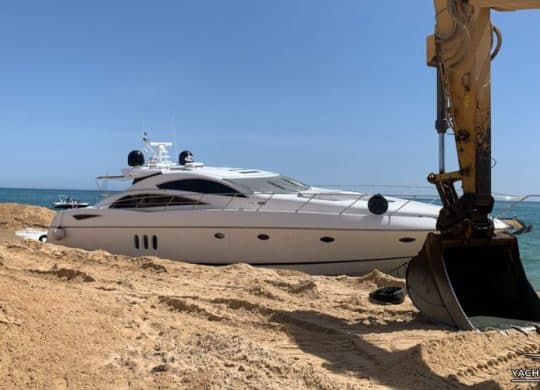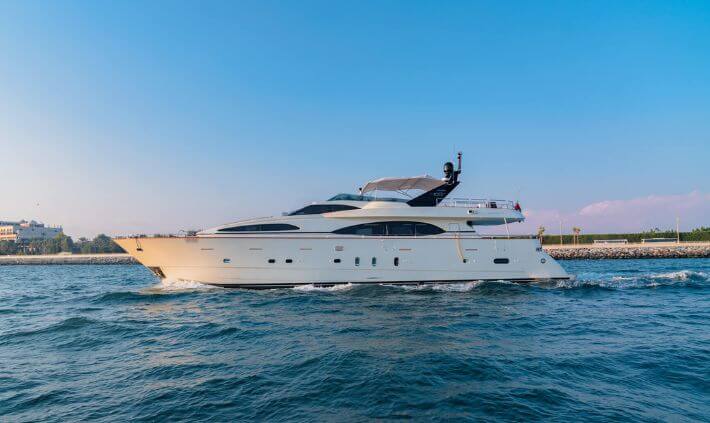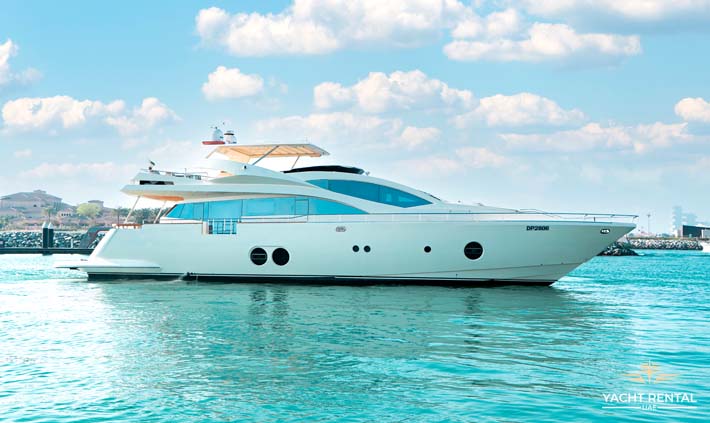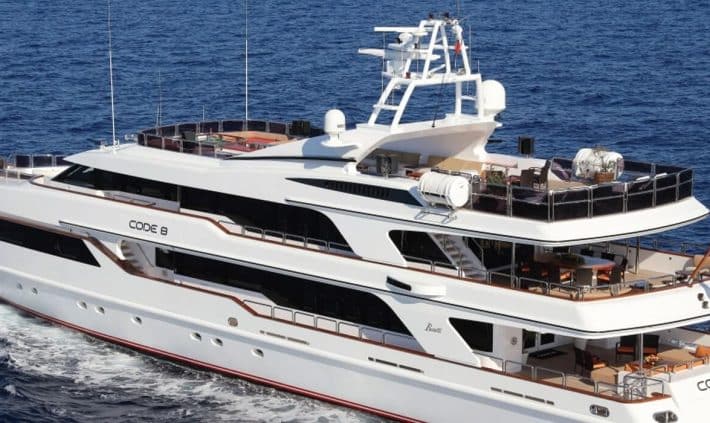Carbon Monoxide Production on Your Vessel
Incomplete combustion produces a byproduct called carbon monoxide. Any appliance on your boat that burns carbon-based fuels, including gasoline engines, diesel engines, generators, and even charcoal grills, produces CO.
The U.S. Coast Guard reports that CO poisoning is a leading cause of boating-related fatalities, often because victims are unaware of the gas’s presence until it is too late. An idling engine can produce CO concentrations hundreds of times higher than what is considered safe in a home.
The Most Dangerous CO Concentration Zones
Certain areas on and around a boat consistently show the highest levels of CO. Understanding these hotspots is critical for safety.
The Stern and Swim Platform
The area at the back of the boat, particularly near or under the swim platform, is the most common site for a dangerous CO buildup. This happens for a few reasons:
- Engine and Generator Exhaust: Most marine engines and generators have exhaust ports located at the stern, often near the waterline. These systems discharge CO directly into this area.
- The “Station Wagon Effect”: When a boat is underway, a low-pressure air pocket, or vacuum, can form at the stern. This vacuum can suck exhaust fumes from the engines and generator back onto the boat, particularly into the cockpit and aft seating areas. This effect is more pronounced on boats with boxy, upright designs.
- Blocked Ventilation: Slow speeds, idling, or a following wind can prevent exhaust from clearing away from the boat, allowing it to concentrate heavily at the stern.
A tragic and now-banned activity known as “teak surfing” or “platform dragging,” where a person holds onto the swim platform while the boat moves, led to numerous CO-poisoning deaths because individuals were positioned directly in the path of the concentrated exhaust.
Also Read: What is the Stern of a Boat
Enclosed Cabins and Cockpits
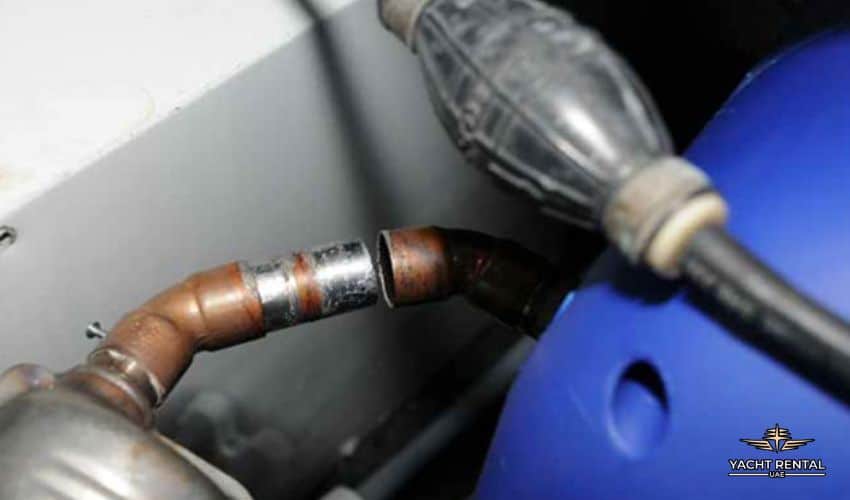
Any enclosed or semi-enclosed space can trap CO. A generator running while the boat is moored or at anchor is a primary culprit.
- Generator Exhaust: A running generator, even one with a proper exhaust system, can release CO that finds its way inside through open ports, hatches, or doors. The CDC notes that generator exhaust can enter cabins in minutes, quickly reaching lethal levels.
- Poor Ventilation: Unlike a house, a boat’s cabin is a small, sealed space. Without active ventilation, CO levels can rise rapidly. This is especially dangerous when people are sleeping.
Factors That Increase CO Concentration
Several conditions can worsen the accumulation of CO on a vessel.
| Factor | Impact on Carbon Monoxide Levels |
| Slow Speed or Idling | Prevents exhaust from being carried away by the boat’s slipstream, allowing it to pool around the stern. |
| Following Wind | A wind blowing from behind the boat can push exhaust fumes forward into the cockpit and cabin areas. |
| High Bow Angle | Operating with the bow high in the air can worsen the “station wagon effect,” increasing the vacuum at the stern that draws in the exhaust. |
| Running a Generator | A poorly placed generator exhaust can send CO directly into occupied areas. This is a primary risk at the anchor or the dock. |
| Blocked Exhaust Outlets | Obstructions can cause exhaust to back up and enter the vessel through other openings. |
Final Words
Beyond detectors, true safety comes from habit. Before starting your engines or generator, I always tell clients to perform a “fresh air check.” This means physically looking to see which way the wind is blowing and which hatches or ports are open. If the generator exhaust is on the port side and a breeze is coming from that direction, you don’t open the port-side galley hatch. It’s that simple.
This habit forces you to think about invisible airflow and how it interacts with your specific boat. A detector is your last line of defense; proactive ventilation based on conditions is your first. Never assume a detector makes you invincible. Check your exhaust and ventilation systems as part of your pre-departure checklist every single time.
FAQ: Carbon Monoxide Safety on Boats
Can you smell carbon monoxide from a boat engine?
No, carbon monoxide is completely odorless, colorless, and tasteless. You cannot rely on your senses to detect it. The only safe way to know if CO is present is with a marine-grade CO detector. Exhaust fumes you might smell contain other gases, but the deadliest component, CO, is undetectable by humans.
Where is the best place to put a carbon monoxide detector on a boat?
Install marine-rated CO detectors in each enclosed accommodation space. Place them in sleeping cabins and the main saloon. Follow the manufacturer’s instructions for placement. Generally, they should be located away from direct drafts and not in “dead air” spaces, such as corners where air does not circulate well.
Is diesel exhaust as dangerous as gasoline exhaust for CO?
Yes, both gasoline and diesel engines produce lethal concentrations of carbon monoxide. While people often associate the risk more with gasoline engines, diesel generators, and propulsion engines are significant sources of CO poisoning incidents on boats. Treat both fuel types with equal caution.
Further Reading
- US. Coast Guard: Boating Safety Circular on Carbon Monoxide
- Centers for Disease Control and Prevention (CDC): Carbon Monoxide Dangers in Boating

